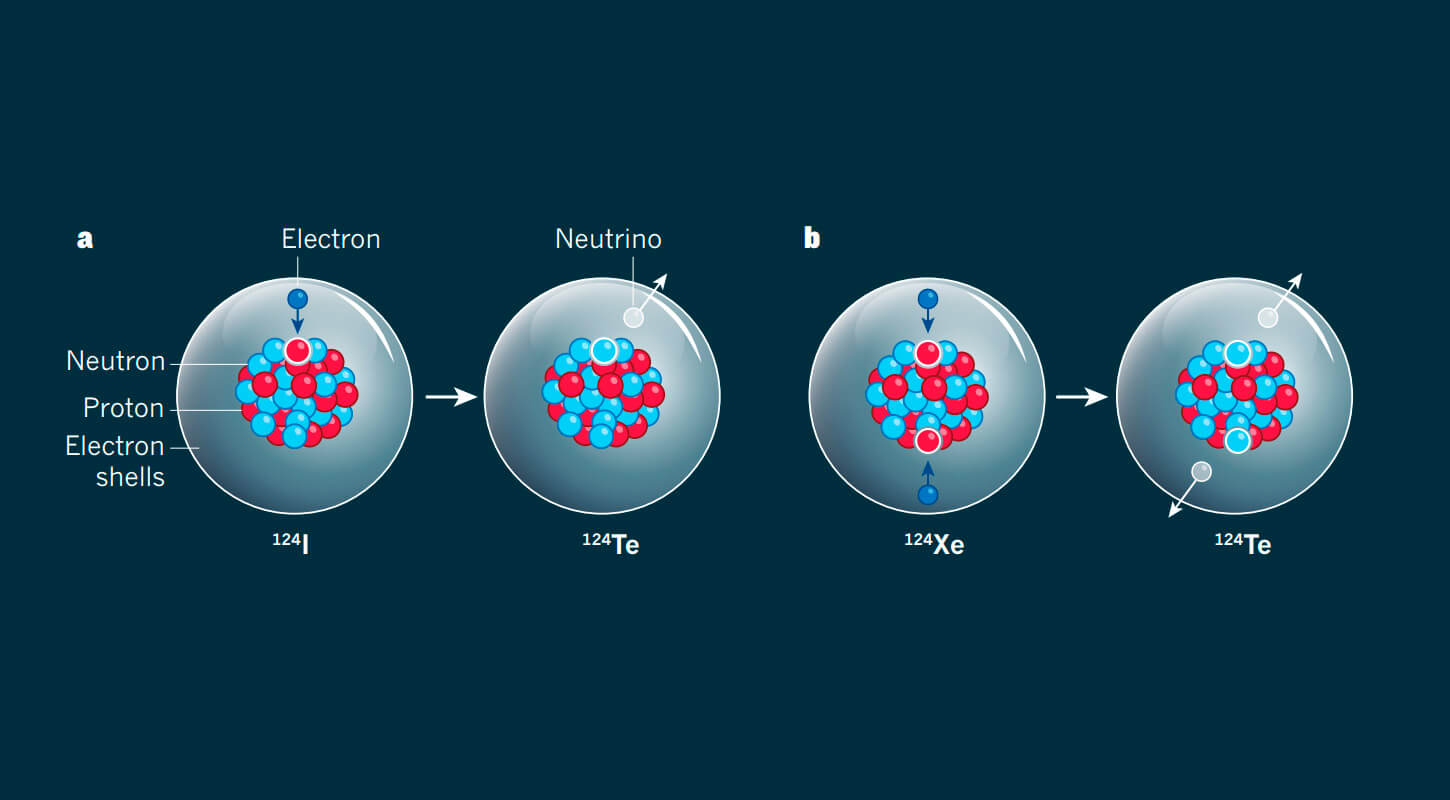With XENON elusive particles of dark matter can be recorded. The world’s most sensitive dark matter detector is located at a depth of 1400 meters under a mountain range in the central part of Italy.
Recall that scientists have calculated that the usual substance, consisting of atoms and molecules, occupies only a small fraction in the Universe, and more than 85% is mysterious dark matter. Nevertheless, this substance has so far been observed only indirectly, according to its gravitational influence, which regulates the dynamics of space objects.
It is expected that dark matter consists of stable elementary particles that have not yet been discovered. The most likely candidate for this role is considered to be weakly interacting massive particles, or wimps, and it is precisely that physicists are trying to catch in the course of the experiments.
The detector has a cryostat containing 3.5 tons of liquid xenon cooled to minus 100 degrees Celsius. To minimize the effects of background radiation, it is surrounded by a tank of 700 tons of purified water. The device will register extremely weak flashes of light and charge changes that must occur every time the wimps coming from the center of the Milky Way collide with the nuclei of the xenon atoms. For this, the giant complex is equipped with 248 ultra-accurate sensors capable of detecting even single photons of light.
The XENON team very carefully selected the materials used in the construction of the detector, ensuring that their initial contamination with radioactive isotopes complied with the requirements of the experiment. After all, the rate is very high: if scientists manage to register WIMPs, this work will undoubtedly go down in the history of world science. Even if they receive only indirect confirmation of such interactions, this will be a good basis for work on the next generation of the XENONnT detector, which will be created on the same basis. But in the case of complete failure, there can be great doubts that the search for dark matter is conducted in the right direction.
Dark matter detector detected an extremely rare event
As part of the dark matter search project, the XENON Collaboration research team on the XENON1T detector detected for the first time the radioactive decay of the xenon-124 isotope, which has a half-life longer than the age of the Universe more than a trillion times.
The theory predicts that the radioactive decay of this isotope has a half-life that exceeds the age of the Universe by many orders of magnitude, but we had no evidence of this process before. But now we really managed to see the decay of xenon-124. This is the longest and slowest process that has ever been directly observed, and our dark matter detector was sensitive enough to notice it.
Most xenon isotopes have a half-life of less than 12 days, but some are considered extremely long-lived and essentially stable. Xenon 124 is one of them.
It is assumed that the age of the Universe is only 13–14 billion years, and the theoretically predicted half-life of xenon-124 is 160 trillion years, during which it decays to tellurium-124. However, observations made significantly increase this value and bring the half-life of xenon-124 closer to 18 sextillons of years (18,000,000,000,000,000).
Half-life does not mean that every atom disintegrates for so long. The number simply indicates how long it will take on average for the bulk of the radioactive material to be halved. Nevertheless, the probability of seeing such an event for xenon-124 is extremely small, unless you collect a sufficient number of its atoms in the most protected from external influences place on Earth.
Such a place is a camera located deep below the surface in the mountains in Italy, in which there is more than three tons of ultra-pure liquid xenon. It is part of a project to search for elusive, weakly interacting massive dark matter particles, known as WIMP, and has the designation XENON1T.
We can see single neutrons, single photons, single electrons. Everything that gets into this detector will somehow release energy, and this is measurable.
The proof of the decay of xenon-124 was obtained in the form of the transformation of a proton inside the nucleus of an xenon atom into a neutron. In most of the elements subject to beta decay, this happens when one electron is drawn into the nucleus. But the proton in the xenon atom must absorb two electrons in order to turn into a neutron, an event called double electron capture. It occurs only when the two electrons are near the nucleus and at the right time: a rare coincidence of circumstances, multiplied by another rare coincidence of circumstances, makes this event ultra-rare.
This exciting discovery expands the boundaries of our knowledge of the most fundamental characteristics of matter. Despite the fact that we have not yet been able to detect dark matter, its search may lead to the discovery of other exotic processes unrelated to it, including the discovery of another invisible process – neutrinoless double electron capture, in which no neutrinos are released. Its observation will have consequences for the nature of the neutrino and will give access to its absolute mass.
Dark matter detector XENON
Click To Tweet
The post Dark matter detector XENON appeared first on Upcosmos.com.
